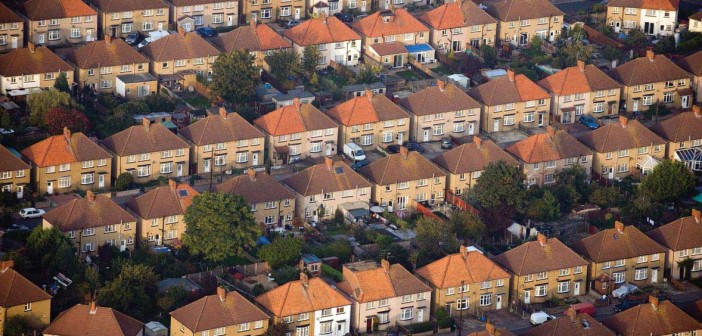You might wonder what BIM has to do with the current Housing Crisis in Ireland? Read On!
By Ralph Montague.
I was fortunate to be asked to contribute to the recent Sunday Business Post Property Summit.
Yes, we have a “housing crisis” in Ireland. We need 25,000 units a year, until 2020, but we have only built 5,000 units this year. And demand is driving price increases and potentially another boom/bust (did we not learn anything?). But it is not “everywhere” (its focused in major cities like Dublin, Cork, Limerick and Galway) and it is not “everything” (focused on social housing, small to medium apartment units for students, young professionals, singles or couples, and “empty-nesters” looking to downgrade). We apparently have enough 3-4 bedroom houses in the suburbs or the countryside – we just need to get the right people into the right type of accommodation, in the right area (urban areas).
AFFORDABILITY was the big word discussed on the day. Many people made the point that “lack of finance” was not the issue – investors were ready & keen to invest, but the “product” had to “stack up” financially, or “tick the boxes”. In other words, the rental or mortgage that the ultimate end user could afford to pay (based on national average salaries), had to cover the investment costs and return on investment expected. So that was the BIG PROBLEM – the cost of delivering housing in Ireland was too high (and this includes land costs, planning costs, infrastructure costs, build costs, taxes, levies, delivery times, etc, etc). At the same time, we have to be mindful that we cannot sacrifice QUALITY for AFFORDABILITY as before – we just have to look at recent disasters like Priory Hall & Longboat Quay to remind ourselves that Quality is as important as Affordability.
So we can conclude that we need to Build Better Buildings (housing), Quicker and Cheaper.
Well everyone instinctively thinks that is not possible (how can you have all 3? Surely something has to give? If you want better quality, you have to spend more time or more money?). However that thinking is based on the incorrect assumption that we can’t do anything about the way we deliver construction in Ireland. But if we can improve the delivery process, we can convert some of the WASTE that occurs in construction, to more quality, or more value. Organisations like the Lean Construction Institute, have measured that over 30% of the cost of construction is waste (waste is defined as anything that doesn’t add value to the product itself).
Imagine that! Over 30% of the costs of construction adds no value to the building or project itself! What can we do to improve this situation? How can we convert some of that WASTE back to QUALITY & VALUE (AFFORDABILITY)? We may not have much influence on taxes, levies, etc, but we can directly influence WASTE.
So finally, after a long introduction to set some context, I get to my point, and the tile of this post, “what BIM has to do with the current Housing Crisis in Ireland?”
Well, “BIM” is all about adopting modern processes, digital technologies and standards, that will drive efficiencies, productivity, reduction in waste, reduction in risk, to produce better product, and to become far more competitive and relevant in the 21st century. IS BIM itself a solution to our “housing crisis”- NO! But improving the way we do design and construction is defiantly part of the solution, so YES!, BIM is a major part of the solution.
The UK government, as a major property client, have a construction strategy (Construction 2025) to reduce construction costs by 33%, improve delivery time by 50%, and reduce the carbon emissions of buildings by 50% by 2025, and improved process, standards, and the digitisation of the construction industry (through the implementation of BIM) is a key part of that strategy. So those guys believe it is possible to “Build Better Buildings, Quicker & Cheaper” – shouldn’t we have the same aims?
Ireland desperately needs a similar strategy to deliver better product in the local market, but also to become and remain more competitive, and relevant in the international property market. Our strategies, policies, politics, need to drive innovation and competitiveness from the “top down”, with leadership and vision, from our government and our industry leaders, and from the “bottom up” with commitment and joined-up thinking from the people involved in day-to-day design & construction.
Over the last 4 years the UK government have developed the standards, procedures and protocols to support their strategy and the BIM process. They have tested, demonstrated and documented the savings on pilot projects, and they have made all this information, including the lessons learned, available to anyone who is interested. We are in a fortunate position, that we can simply pick up all this valuable effort, to begin to use it in our industry.
There was a lot of talk about the investment required into construction over the next 5 years. If our industry could achieve the 20% savings already demonstrated by the UK government on their pilot projects, it would mean that for every 5 houses we build, one would be free, for every 5 schools we build, one would be free, for every healthcare facility we build, one would be free. In other words, we, as taxpayers, would be getting better value for money. But it would also mean that the improved quality and performance of all the buildings that we construct over the next 5 years, would result in reduction of carbon emissions.
Improving the way we deliver construction, is a very important subject, and needs to be seriously considered, discussed, and acted upon, in the context of all the good work already carried out by the international community, and in particular the UK. We don’t need to “start from scratch”, we don’t need “to reinvent the wheel”, and we don’t need a uniquely “Irish Solution”, because we want to be competitive and relevant in a global construction market, set to rise from $8.5trillion to $12 trillion between now and 2025. The UK standards (BS1192 parts1-5) are based on international best practice for Asset Management (ISO 55000), and are currently in the process of becoming international standards themselves (ISO19650), all of which would be important to international investors in terms of corporate governance and responsibility.
Is BIM Going to solve the “housing crisis” in Ireland? NO! Not by itself. Not unless there is a clearly defined process that requires all participants to work together to cut out waste and achieve better quality & value. We need to follow a standard.
“The Catch” is that the benefits of BIM as demonstrated, are not going to be achieved by accident, without the commitment of the people involved. Because of the fragmented nature of the construction industry, unless BIM is a clearly defined project requirement, the supply chain is unlikely to respond. The “call to action” for public and private construction clients, and developers, who are trying to deliver solutions to the “housing crisis”, is that, if you want to see significant improvements in cost, value and carbon performance, then you need to make BIM (better information management) a requirement on projects (according to PAS1192-2 standard), and this will then empower/allow/require industry to respond accordingly.
Let’s go build some housing, but let’s do it in a much better than we have ever done before.
Ralph Montague is the managing partner of ArcDox, a specialist BIM consultancy practice, and also coordinator of a number of specialist industry groups dealing with the adoption of digital technologies in constructions, including the Royal Institute of Architects of Ireland (RIAI) practice sub-committee for BIM, and the Construction IT Alliance (CITA) BIM Group.
BIMIreland.ieM Ireland




